Cleansing oils have shot to the top of the beauty charts because they sweep away stubborn makeup, daily grime, and extra shine without turning your face into a tight desert. In this post, we’ll walk through how these thick, slippery liquids manage to be gentle and powerful all at once, which makes them feel a little bit magical. You’ll learn why skin experts swear by them, how to pick one that doesn’t overwhelm your complexion, and the must-have ingredients that really earn their keep inside the bottle. With the best cleansing oils in hand, meeting your mirror in the morning with a fresh, lit-from-within glow will finally feel like a routine rather than wishful thinking.
What is a Cleansing Oil and How Does it Work?
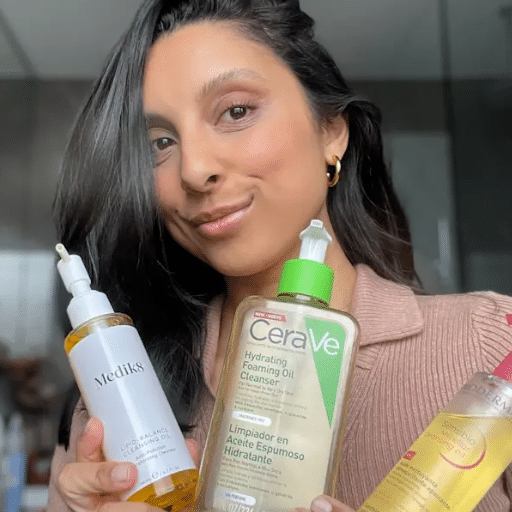
Picture a cleansing oil as a bright orange traffic cone that shouts, Stop! When makeup tries to move onto the next step of your nightly skincare routine. The formula is heavy on plant or mineral oils that creep into pores and loosen whatever clung there all day, a tiny handshake that softens dirt instead of scrubbing it raw. Scientists call the trick like-dissolves-like, so the botanical fats mingle with foundation, sunscreen, and even oily patches, break them apart, and wait politely for water to finish the job. Splash your face, watch the thick liquid go cloudy, and rinse; when the sink drains, so does the worry that a stingy, squeaky-clean feeling means you’re actually clean.
A good cleansing oil gives your skin the scrub it needs while still being kind and soothing. That makes it work for nearly every skin type, even the driest or most sensitive faces.
Understanding the Cleansing Method
It’s pretty simple once you break it down. You rub the oil onto dry skin, and it grabs hold of extra grease, leftover makeup, and any street dust that slipped past your sunscreen.
Add a splash of water and the product changes, turning into a creamy, milk-like wash that rinses off without a trace. Because the formula does not yank moisture away, your face feels clean but still soft and hydrated.
Many people use the oil as the first step in a two-part wash. That way, the skin ends the routine feeling even and ready for the rest of its creams and serums.
How Oil Cleansers Benefit Different Skin Types
Folks with parched, thirsty skin often discover that a slick oil cleanser feels like drenching their face in a cozy blanket. The grime slides off almost by magic, and the skin is left baby-soft instead of tight.
People battling oil or the occasional breakout might blink in disbelief, yet that same slippery formula can hush overproductive glands and calm angry patches without a single harsh scrub.
Even the most easily offended skin gets a break because oils glide in, lift out dirt, and never leave a trail of red irritation behind.
When all is said and done, one bottle can stroke, shine, and shield complexions, letting the fragile moisture wall stay upright and ready for tomorrow.
Breaking Down the Myth: Oil Cleanse for Oily Skin
Most folks wince at the thought of rubbing oil on already shiny faces, and I totally get that. Still, the science backs it up: oil attracts oil, so a slick cleanser lifts away grease, makeup, and grit without leaving your skin brittle.
Reach for a harsh scrub once, and your complexion freaks out, cranking up sebum production to repair the damage. An oil-based wash calms the panic, melting away the day while locking in just enough moisture. Pick the right blend and you dodge clogged pores and surprise breakouts, plain and simple.
How to Use Best Cleansing Oils Effectively?
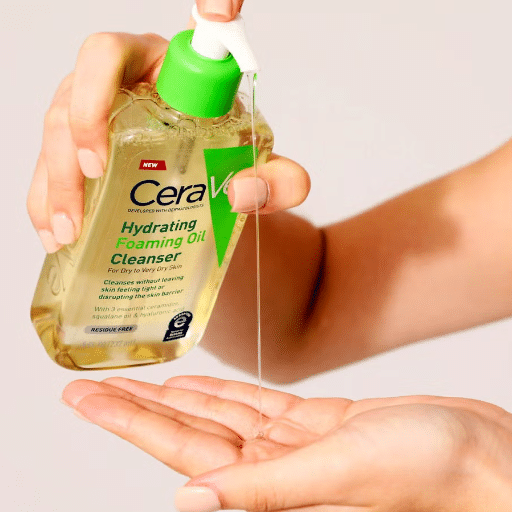
Using a cleansing oil is easy once you get the hang of it. Pop a small squirt of the oil into your palms while your face is still dry. Rub your hands together and then massage the slick help onto your skin in soft circles. Pay extra attention to the spots where mascara, foundation, or sunscreen like to hide. The oil works quietly, breaking down the gunk without messing up your skin barrier. When you can feel most of the grime melting away, splash a bit of water onto your face. The liquid turns the oil into a creamy, milky wash that rinses clean. Give it another minute or two under lukewarm water until everything is gone. If you like that super-fresh feeling, follow up with a mild foaming or gel cleanser. One last tip: pick a cleansing oil that matches your skin type- oily, dry, or combo- for the best result. Your complexion will thank you later.
Step-by-Step Guide to Double Cleansing
Double cleansing kicks off most of my nights. I usually start with a skin-friendly oil so my makeup doesn’t stand a ghost of a chance by morning. Picking the right oil takes a bit of homework.
If my face feels oily or breakouts are buzzing around, I reach for a fast-absorbing oil cleanser. Formulas that list tea tree or salicylic acid up front calm shine without clogging pores. Dry days switch the script. Creamy jojoba or argan oil blends lock in moisture and keep irritation miles away. Normal or combo types win with something gentle yet hydrating- sometimes the middle path is the best shortcut. Glancing at the back label still matters; hidden irritants can sneak in when you aren’t looking.
Common Mistakes to Avoid When You Use Oil for Makeup Removal
Palmfuls of oil glide on pretty slick, but rookie errors can cheapen the win. The biggest pitfall is simply using the wrong type of oil. A heavy coconut blend can bog down oily skin, while a feather-light grapeseed won’t feed dry patches. Grapeseed, hazelnut, or even sunflower oils do well on shine-prone faces. Almond, avocado, or castor step up for skin craving extra TLC. Tweaking oils according to mood makes every wipe easy and every finish flawless.
Skipping a Good Rinse
If I rush the rinse, leftover product sticks like glue, and my pores pay the price. A slow, warm-water finish-or a light second cleanser-usually sets things straight.
Slathering on Too Much Oil
Dousing my face in oil can turn cleanup into a slippery chore. A pea-sized dab gets the job done without throwing my complexion off balance.
Dropping the Double Cleanse
One pump of oil zaps mascara, yet a creamy water-based wash seals the deal. Skip that second step and greasy reminders linger all night.
Avoiding these slips keeps the end-of-day routine gentle, lets my skin breathe, and stops tomorrow’s makeup from sliding onto an already tired face.
Which is the Best Cleansing Oils for Your Skin Type?
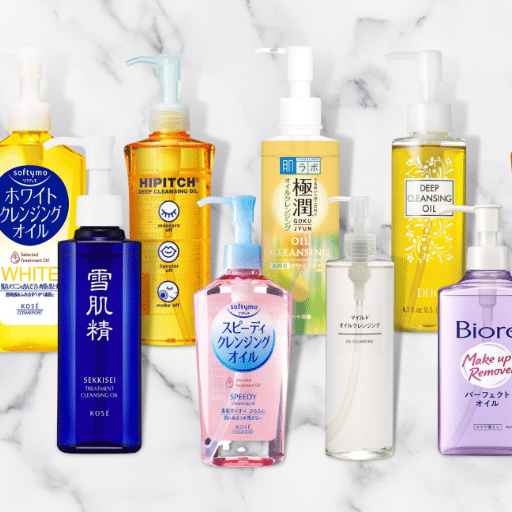
Selecting the best cleansing oils for your skin type requires considering factors like needs and concerns. If you have oily or acne-prone skin, select non-comedogenic oils such as tea tree or grapeseed. For dry and sensitive skin, cleansing oils like jojoba or avocado oil aids in removing dirt while nourishing the skin. Those with combination skin can choose argan or sunflower oil, which balances the dry and oily areas of the face. As always, ensure the product you choose matches your skin type and specific concerns to yield the best results.
Top Picks for Dry Skin and Best for Dry Skin Options
While dealing with dry skin, one needs to focus on maintaining deep hydration along with being gentle with the skin. After thorough research and top recommendations from multiple trusted sources, I would suggest these standout options:
CeraVe Hydrating Facial Cleanser – This Dermatologist-recommended cleanser includes ceramides and hyaluronic acid which help retain moisture while cleansing without irritation.
La Roche-Posay Toleriane Hydrating Gentle Cleanser – This cleanser contains niacinamide and prebiotic thermal water which soothes and repairs dry skin while softening and nourishing it.
Eucerin Advanced Repair Cream – This cream is perfect for extremely dry areas as it helps restore the skin’s natural barrier while providing intense hydration due to its high urea and ceramide content.
These products have received positive feedback and are tailor-made for individuals with dry skin. Remember to patch test new products for skin compatibility.
Recommended Products for Acne-Prone Skin and Sensitive Skin
La Roche-Posay Effaclar Duo tops my list for acne. It contains benzoyl peroxide, which zaps bacteria, niacinamide, which calms redness and the gel-cream is lightweight, so it unclogs pores without tightening the whole face. One tube does not last very long, so order more than one at a time.
Cerave Hydrating cleanser is effective for sensitive skin and works wonders for sensitive complexions. The gentle foam made from ceramides and hyaluronic acid allows makeup and dirt to be swept away while the skin is wrapped in moisture.
Whenever irritation occurs, make sure to stick to products labeled non-comedogenic and fragrance-free. If a new product is introduced, it’s always best to do so one product at a time, so if one catches inflammation, it can easily be spotted as the troublemaker.
The Role of Camellia Oil and Sunflower Seed Oil in Facial Cleansing
In the relaxing world of skincare, both camellia oil and sunflower seed oil are distinguished for their gentleness and effective properties. These two oils remove dirt, makeup, and other impurities without needing any scrubbing or harsh rubbing. Camellia oil is nearly weightless and has high antioxidants and fatty acids that help break down products quickly and cleanse deep-seated grime effortlessly. Moreover, it retains the moisture barrier, allowing you to step away from the sink with supple, glowing skin instead of tight patches. Unlike Camellia oil, sunflower seed oil is enriched with linoleic acid, which helps remove oil and at the same time calms the skin down. This blend does not block pores, which is helpful to those who struggle with redness or irritation. Because of its gentle nature, both oils can be added to a two-step cleanse or used alone when short on time. Massaging the oil onto the face feels pampering. In seconds, dirt and makeup glide off and rinse away effortlessly. With gentle camellia and sunflower oils, skin health becomes easier to maintain.
Can Cleansing Oils Help Remove Waterproof Makeup?
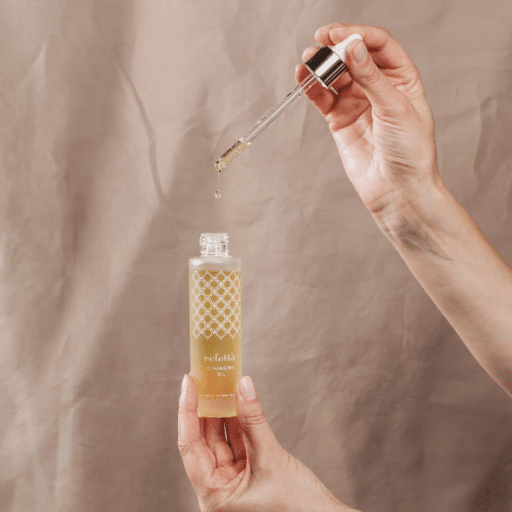
Absolutely, cleansing oils are essential for removing waterproof makeup and mascara. Their oil-based formulation lifts waterproof mascara and foundation’s long-wearing, water-resistant components without requiring vigorous scrubbing. The oil binds to both makeup and impurities on the skin, allowing for effortless rinsing. This technique is gentle and helps the skin retain moisture, making it ideal for individuals who wear waterproof makeup frequently.
Understanding Waterproof Makeup and Why It’s Challenging to Remove
Waterproof makeup is resistant to moisture, sweat, and even tears, making it super durable. Because of this, it can be very challenging to remove with standard makeup remover. Based on what I have learned, the solution appears to lie in the use of oil-based cleansers. These products tend to work best on waterproof makeup. They do not need scrubbing or rough washing to work, so they won’t irritate the skin. Oil cleansers are able to relax and remove makeup while also retaining hydration, creating a gentle and effective removal process.
The Science Behind Deep Cleansing Oil and Its Efficacy
Deep cleansing oil is effective because it works on the principle that “like dissolves like.” The cleanser’s oil component binds with the oils on the skin, including sebum, perspired sunscreen, and even waterproof makeup, loosening and lifting them away. In contrast to other cleansing products, deep cleansing oils do not strip the skin of moisture. They protect the lipid barrier of the skin and keep the skin hydrated, balanced, and healthy. Many formulas contain emulsifiers that allow the oil to be rinsed with water. So no residue is left behind. Through my research and personal experience, a good non-comedogenic cleansing oil supports skin health and gently removes impurities without clogging pores or irritating the skin.
Expert Tips for Using Facial Cleansing Oil on Waterproof Products
For you to benefit from facial cleansing oil on waterproof products, it is easier to do this with a dry face; this ensures that waterproof makeup and sunscreen are broken down. Take some oil and rub it gently between your hands. Put it on your skin and rub it in a circular motion. Concentrate more on the areas with difficult products, for instance, the eyes and lips. Now, add a little amount of water to your hands so that you can emulsify the oil. This should turn milky, and this helps lift away impurities. Splash your face with lukewarm water while rinsing off oil until there’s nothing left behind. Lastly, as a part of a double-cleansing routine, use a gentle water-based cleanser to keep your skin clean and fresh without using harsh water. Using this method ensures that all traces of waterproof products are effectively removed while preserving the skin’s natural balance.
Why Should You Consider Double Cleansing?
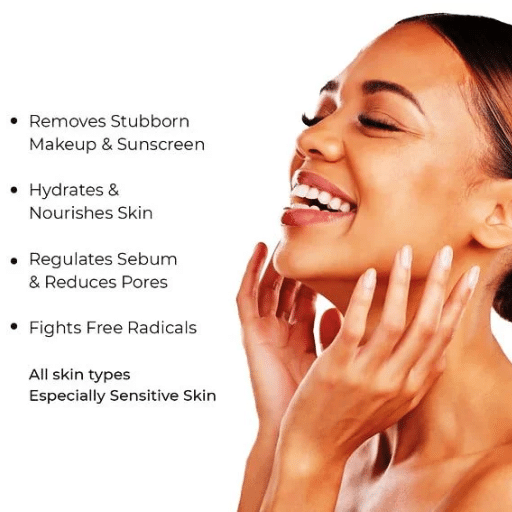
Double cleansing greatly assists in maintaining skin health and radiance. It aids in the removal of stubborn makeup, sunscreen, trapped dirt, and excess oil. This technique begins with an oil-based cleanser, followed by a water-based one, ensuring deep cleansing without disruption to the skin’s moisture barrier. Regular double cleansing prevents stubborn pores, reduces breakouts, enhances the absorption of skincare products, and clears skin.
Benefits of Double Cleansing for a Healthy Skin Barrier
In my experience and extensive research, double cleansing has proven to be the most effective level of cleansing for your skin barrier. An oil-based cleanser breaks down makeup, sunscreen, and sebum, while a gentle water-based cleanser refreshes the skin and removes leftover impurities. This method prevents stubborn pores, breakouts, and increases the skin’s ability to absorb serum and moisturizer. For me, consistently incorporating double cleansing makes skin feel clearer, more balanced, less irritated, and healthier long-term.
How Double Cleansing Enhances Your Skin Care Routine
The double cleansing method improves my skin care routine by removing makeup, sunscreen, and daily dirt more effectively. The first step of the method removes oily products from the skin, making sure the skin is clean at an oil level, while the second step cleanses and sharpens, refreshing the skin for the rest of the routine. This approach has not only enhanced the active texture and clarity but has also improved the efficiency of active ingredients in my serums and moisturizers. Since I started this two-step approach, I’ve experienced fewer breakouts, a more balanced skin tone, and skin that looks healthier.
Best Practices for Double Cleansing with Oil Cleanser and Cleansing Balm
To start, the first step of double cleansing requires an oil cleanser that will remove make-up residues, sunscreen, as well as excess sebum. After putting some of the oil cleanser on a dry face, massage it for 60 seconds, paying special attention to areas prone to buildup. Use lukewarm water to rinse and follow up using a cleansing balm to get rid of any leftover impurities or residue. Choose a non-stripping balm that is gentle and suited to your skin type, be it dry, oily, or sensitive. Cleanse again for 30 to 60 seconds. Always rinse thoroughly and gently pat the skin dry before moving to the next steps in the skincare routine. It is essential that the benefits of double cleansing is done with proper and consistent application.
References
-
Allure: 14 Best Cleansing Oils in 2024, Tested & Reviewed – This article offers a comprehensive review of top cleansing oils, including their benefits and suitability for different skin types.
-
Paula’s Choice: What Is Cleansing Oil? How to Use, Benefits – This source explains the benefits of cleansing oils, their effectiveness, and how to use them properly.
-
WebMD: What to Know About Deep Oil Cleansing – This article discusses the science behind oil cleansing, its benefits, and tips for choosing the right oil.
Frequently Asked Questions (FAQ)
Q: What are the benefits of using a cleansing oil over traditional face wash?
A: Cleansing oils effectively dissolve makeup, sunscreen, and excess sebum without stripping the skin of its natural oils. They are especially beneficial for removing stubborn eye makeup and leave the skin feeling nourished and hydrated, unlike some traditional face washes that can leave the skin feeling dry.
Q: How do I choose a cleansing oil for my skin type?
A: When choosing a cleansing oil, consider your skin type and specific concerns. For acne prone skin, opt for a non-comedogenic formula like jojoba oil or heartleaf pore control cleansing oil. If you have dry skin, a nourishing makeup removing oil cleanser with ingredients like organic olive oil or apricot kernel oil may be best.
Q: How does the DHC Deep Cleansing Oil work as a makeup remover?
A: The DHC Deep Cleansing Oil is formulated with organic olive oil and rosemary leaf oil, which effectively break down makeup and impurities. It emulsifies upon contact with water, turning into a milky texture that rinses clean without leaving any oily residue, making it an excellent choice for removing both face and eye makeup.
Q: Can I use a cleansing oil if I have acne prone skin?
A: Yes, you can use a cleansing oil even if you have acne prone skin. Look for formulations that are lightweight and non-comedogenic, such as those containing grape seed oils or essential oil blends that help balance oil production and cleanse pores without causing breakouts.
Q: What is the difference between a pore cleansing oil and a nourishing makeup removing oil cleanser?
A: A pore cleansing oil is specifically designed to penetrate and cleanse pores, helping to reduce blackheads and improve skin texture. A nourishing makeup removing oil cleanser focuses on dissolving makeup and providing hydration, often containing rich plant oils that leave the skin soft and moisturized.
Q: How often should I use a cleansing oil in my skincare routine?
A: It is generally recommended to use a cleansing oil once daily, typically in the evening, to effectively remove makeup and impurities from the day. This can be followed by a gentle foam cleanser if you prefer double cleansing for a thorough cleanse.





